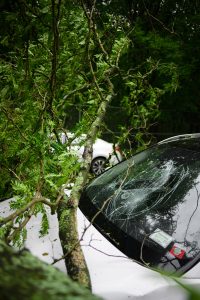55 insurance terms you should know about
There is a lot of jargon in the insurance business. Insurance Business went to the websites of several reputable industry groups and looked through their glossaries to find the most important insurance terms that every customer should know. This will help your clients understand all of these different phrases better.
In this part of our client education series, we will explain the meanings of common industry buzzwords. This will help consumers understand how different insurance policies work so they can find the coverage that best fits their needs. We want agents and brokers to send this article to their clients to help them figure out how to deal with all of these issues.

If you want to find the definition of a certain word right away, press control + F (or command + F on a Mac) and then type in the word.
How to understand common insurance terms
The following insurance terms fall into five groups:
- General terms: for insurance jargon that applies to all policies
- Auto insurance terms: These are words that only apply to car insurance.
- Accident and health insurance buzzwords: health insurance terms
- Home insurance terms: for terms that are often used in property insurance, such as homeowners’, landlords’, and renters’ policies
- Life insurance terms are words and phrases that are often used in life insurance policies.
- The definitions below came from the glossaries of industry groups like the National Association of Insurance Commissioners (NAIC), the Insurance Information Institute (TRIPLE-I), and the International Risk Management Institute (IRMI), as well as from several insurance industry experts, including myself!
General terms
All-risk
All-risk coverage, which is also called “open perils,” protects against all kinds of losses except those that the policy says are not covered. This is true for several types of property and casualty (P&C) insurance, such as home, auto, and business insurance.
Cancellation
This means giving up on an insurance policy before the end date that was set. Policyholders usually get their money back for any unused premiums, but insurers may charge a cancellation fee.

Claim/Claimant
An insurance claim is a formal request for compensation for losses or damages that are covered by the policy. This request is made by the policyholder to the insurance company. For auto insurance, these can include car accidents; for homeowners’ insurance, storm damage; and for health insurance plans, emergency surgeries.
The person who files the claim is called the “claimant.” Most of the time, it’s the person who owns the policy.
Conditions (political constraints) (political constraints)
This part of a policy document spells out what the insured (the policyholder) and the insurance company are responsible for. It also says what needs to be done for the coverage to be effective.
Commencement date
This is when the insurance policy starts to cover things. It is also called the “date of effect.”
Declarations page
This part of the policy document, which is also called the “dec page,” is a summary of the policy’s details. It lists the coverages, limits, deductibles, and dates when the policy goes into effect. Often, this page is on the first page of the policy.

Deductible
A deductible is the amount that the policyholder agrees to pay out of pocket before the insurance company takes care of the cost. Most of the time, when the deductible is higher, the premiums are lower because the insurance company is taking on less financial risk.
You have to pay insurance deductibles. There’s no way around it. Even the biggest insurance companies in the world have these policies. Their main purpose is to stop small claims from flooding insurance companies.
Hazard
A “hazard” is a situation or state that makes it more likely that something bad will happen. For example, ice on sidewalks makes it more likely that someone will slip and get hurt, while smoking makes it more likely that a policyholder will get lung cancer.

This is not the same as a risk, which is something that makes you lose something. This includes fire, theft, car accidents, illness, death, and natural disasters.
Lapse
This means a time when someone doesn’t have health insurance. For example, if a person fails to renew their car insurance, they will no longer be covered.
A claim for insurance is made because of a loss. This includes both intentional and unintentional damage to the insured or their property.

listed as insured
The person or business named in the policy is the named insured. This person or business is also called the policyholder. There can be more than one person named on an insurance policy. On the declarations page of the policy document, you can find a list of the named insureds.
Named perils
In the policy document, these are the specific types of damage or loss that are listed. A named-peril policy protects you from these things.
Policy
An insurance policy is a written agreement between the person who bought the policy and the insurance company. It describes the coverage in detail. This includes what is covered, what isn’t covered, deductibles, and premiums.

Premium
This is how much an insurance company will charge you in exchange for coverage. Premiums are affected by a number of things. For auto insurance, these factors include age, gender, and driving history. For homeowners’ insurance, these factors include weather and crime risks in the area. For life insurance, these factors include medical history and whether or not you smoke.
Rider
A rider, which is sometimes called an endorsement, is add-on coverage that policyholders can choose to add to their policies. This includes coverage for identity theft and water backup for home insurance and forgiveness of accidents and roadside assistance for auto insurance.
Agreed value
This kind of policy pays out the value that the policyholder and insurance company agreed on when the policy was bought if the car is damaged so badly that it can’t be fixed. This is different from “stated value” coverage, which pays out the lower of the “stated value” or “actual cash value” at the time of the loss.
Coverage for bodily injuries
This is also known as “bodily injury liability,” and it pays for the medical bills a third party has to pay because the policyholder caused an accident. This policy also pays for the insured’s legal fees if they are sued for damages.

Accident coverage
This part of a car insurance policy pays for damage caused by hitting another car or object or by the car flipping over.
All bases are covered.
This is the part of car insurance that pays for damage that wasn’t caused by a crash, like fire, theft, or natural disasters. It also talks about thefts of vehicles.
Medical payment coverage for cars
This is optional coverage that helps pay for medical bills the policyholder and their passengers get because of a car accident, even if the driver was at fault. It is also called “Med Pay.”
Report on cars and trucks (MVR)
The MVR shows a person’s driving history, including accidents and traffic tickets, as reported to a state’s motor department.

Coverage for personal injuries (PIP)
PIP is a part of an auto insurance policy that pays for medical bills and other costs caused by a car accident, no matter who was at fault. It covers injuries to the policyholder, the car’s passengers, and anyone driving the car, even people who don’t have insurance.
Insurance for telematics
This type of insurance is also called usage-based insurance, or UBI, and it works by keeping track of a policyholder’s driving habits through onboard technology or mobile apps. Telematics then takes the information it has collected and uses it to reward safe drivers with lower premiums or, in some cases, to punish risky drivers with surcharges.
Coverage for uninsured drivers
Uninsured motorist coverage, also called “UM” coverage, is meant to pay policyholders if the driver who caused the accident does not have liability insurance or leaves the scene of the accident without permission.

Insurance for uninsured drivers
UIM, or coverage for drivers who don’t have enough insurance, works almost exactly the same as UM. The only difference is that UIM protects you if the driver who caused the accident has insurance but not enough to cover all costs.
Would you like a little help lowering your insurance premiums? Read our list of the 10 UK cars that are cheapest to insure.
Health care coverage
Services that come to you
These are medical services that are given to policyholders who are not in a hospital or nursing home. Outpatient services are another way to talk about ambulatory services.
Coverage for living-in care
This kind of insurance pays out if the policyholder has to live in a place where people who need help can get it. Some health insurance companies offer this kind of policy as an add-on.

